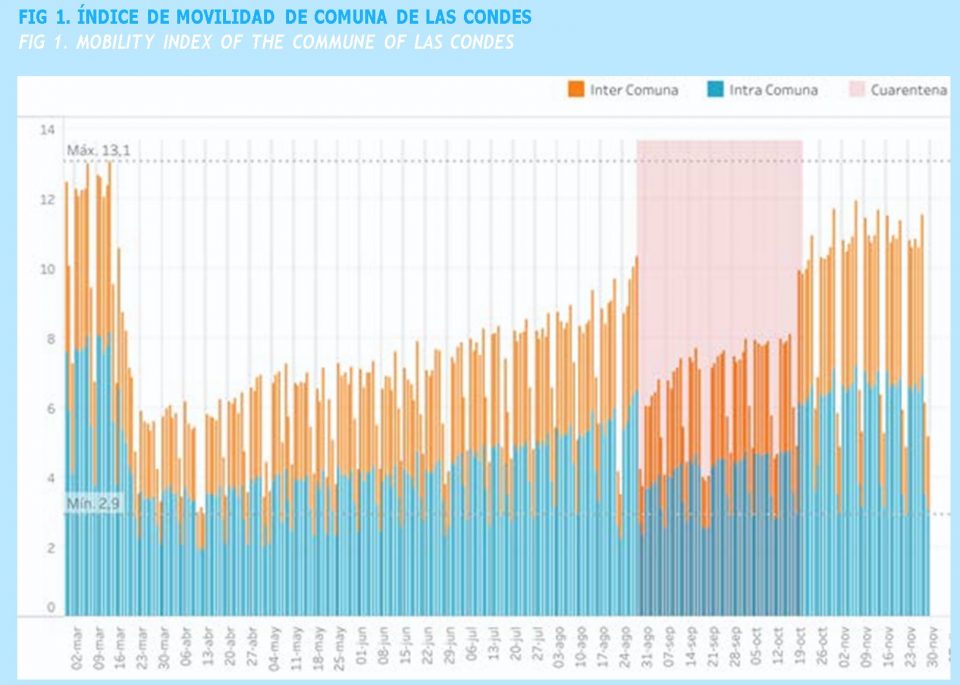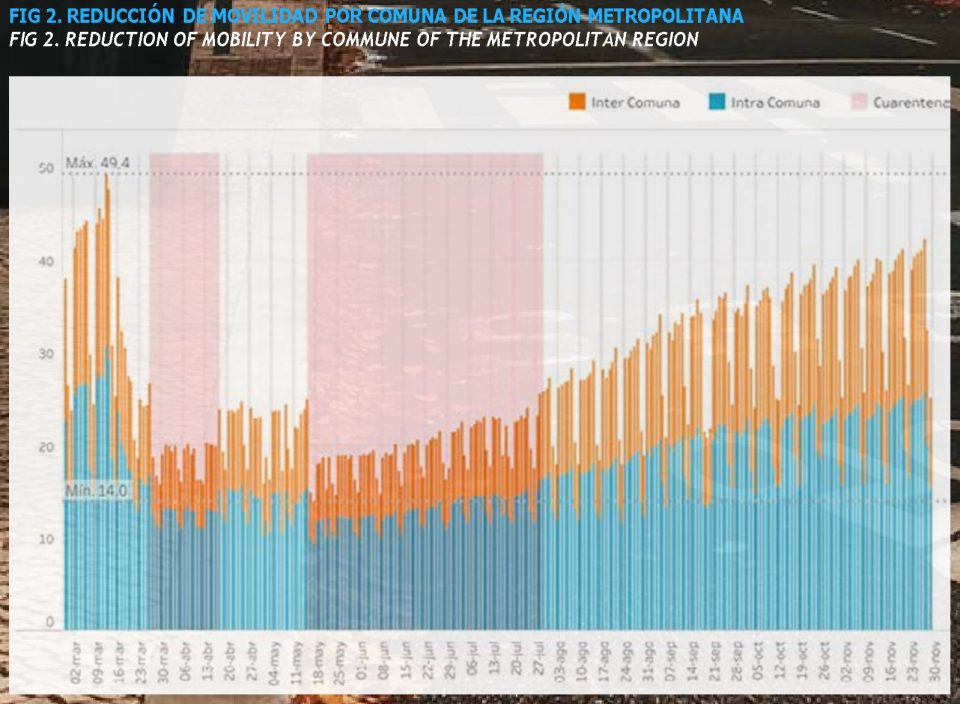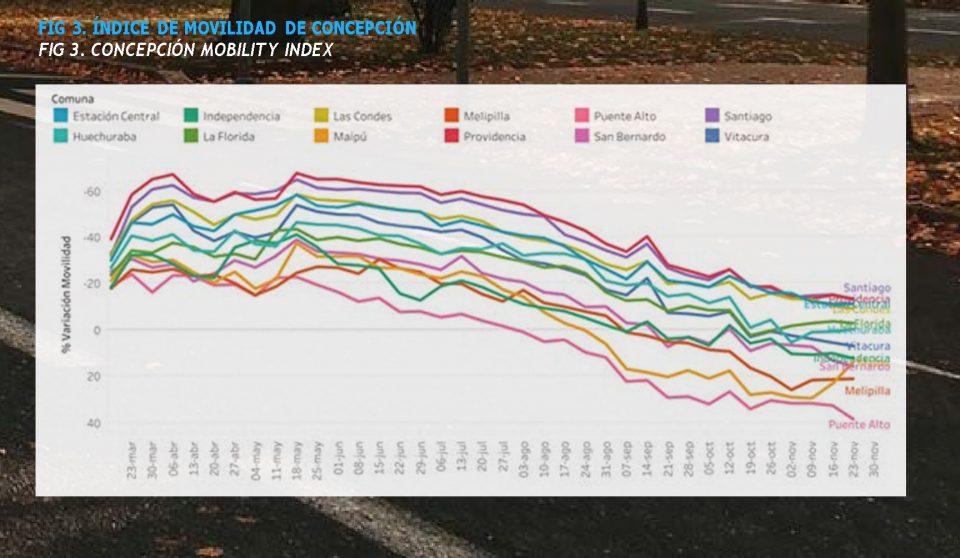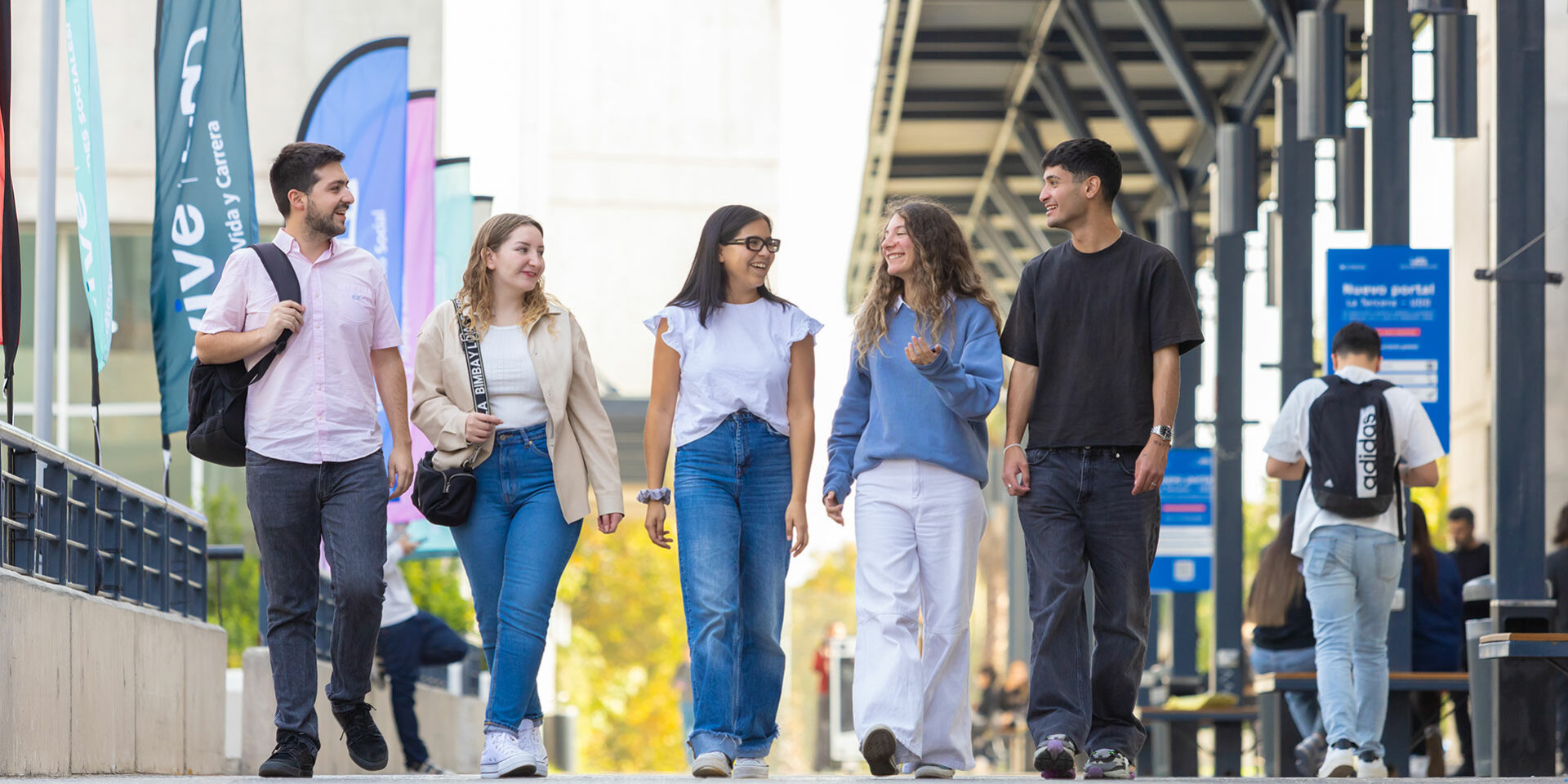COVID-19 Mobility InDex
By: Loreto Bravo, PhD, Directora del Instituto Data Science, Facultad de Ingeniería
Leonardo Ferres, PhD, Profesor Investigador, Facultad de Ingeniería
The Data Science Institute (IDS) of the Universidad del Desarrollo (UDD), in conjunction with Telefonica Chile and with the support of Cisco, developed the “Mobility Index” algorithm. Since its conception in May 2020, this is an indicator that was the first tool in Chile and one of the top 10 in the world that made use of innovative data analysis and techniques to reveal the effectiveness of the quarantines that were applied in different communes of the country. The IDS team, led by research professor Dr. Leo Ferres, developed during 2020 the “COVID-19 Mobility Index” for the entire country, delivered weekly to the government. Based on anonymized informa- tion and telecommunications data, temporary mobility indices are periodically constructed.
The report indicates the number of trips in and out of each of the country’s communes and regions, measuring the effect of total quarantines. It is a mobility index that reports on the population’s daily mobility and how health measures such as quarantines and sanitary cords are impacting community transfers. This data is generated with a delay of only two days. Thus every Tuesday since April of this year, a report on the previous week’s mobility is issued for each of the country’s communes, providing valuable information for the decision-making process.


REDUCTION OF DAILY TRIPS AT THE COUNTRY LEVEL
The week of March 23rd, in which several communes began with quarantines, an average decrease from 8.4 to 5.4 daily trips was evidenced. Meanwhile, the week of April 6th, the maximum reduction in mobility was reached, reaching an average of 5 daily trips.
In Santiago, it is observed that since March 16th, there has been a decrease in mobility in all the communes studied, even before the official determination of quarantines, which reflects proactive and preventive social behaviors, before the suspension measures in face-to-face education at colleges and universities, or teleworking. In the Metropolitan Region, mobility was reduced by 23.8% after the official physical distancing measures decreed by the health authorities.

Meanwhile, in regions, in the quarantined areas of the Biobío, Ñuble, La Araucanía, Los Lagos, and Magallanes regions, significant decreases in the mobility index were also observed. The municipality of Concepción stands out, which, despite not being in quarantine, decreased its trips by more than 60%.
In general, it is observed that the levels of mobility in quarantine are not sufficient to control the pandemic. In the Metropolitan Region, with 38 confined communes during June, mobility fell by 39%, insufficient considering that a reduction of at least 70% is needed to reduce the level of contagion. A drop of 36% was already observed when schools were closed, so quarantines only achieved a further decrease of three percentage points.
Another precise observation is that the population is suf- fering wear and tear in compliance with quarantines. This observation is reflected in a progressive increase in mobility independent of the confinement measures established.
For the first time, variation in mobility at the communal, regional, and country levels can be observed in Chile, in places that are under quarantine and where voluntary measures are taken. This digital innovation provides a tool to measure social mobility, applying intelligence to public policies known worldwide as data philanthropy. These are studies that are being carried out in different parts of the world and have successfully combated different diseases, such as Ebola in Africa and swine fever in North America. State-of-the-art technology intelligence and allow multidisciplinary teams of international experts to obtain high-im- pact results quickly.
METHODOLOGY USED
The study allows measurements to be carried out periodically in order to support correct and informed decision-making at the country or com- munity level, such as, for example, measuring the effectiveness of quarantines versus sanitary cords or dynamically releasing quarantined areas from according to mobility. It is a mobility indicator (IM) based on telecommunications data delivered through an agreement between the UDD and Telefónica S.A. quantifies people’s movement between and within the communes based on the movements between antennas of their devices. Aggregated and anonymized cell phone records are used to estimate the number of trips between communes. Indicators of (i) resident mobility (IMR) are designed and implemented that allow it to be distinguished from the mobility associated with the floating population, (ii) neighborhood mobility (IMB) that allows understanding at a more granular level the mobility of the city and (iii) mobility by mode (IMM) that breaks down the IM by travel mode (public, private transport).

It is important to note that the cellular and intelligence antennas do not provide exact device locations, and neither do personal information. Data privacy for all UDD researchers is paramount, adopted, and adhering to the strictest international protocols.
The Mobility Index (MI) and its impact during the pandemic have been remarkable. A collabo- rative work of success, involving actors from aca- demia, industry, government, and decision-makers. The data is complex, the technologies are just being crystallized into valuable products for society, yet these same products are no less than impressive. This plan is just the beginning of an applied research agenda that aims to be decisive in public policies during Chile’s digital transformation
